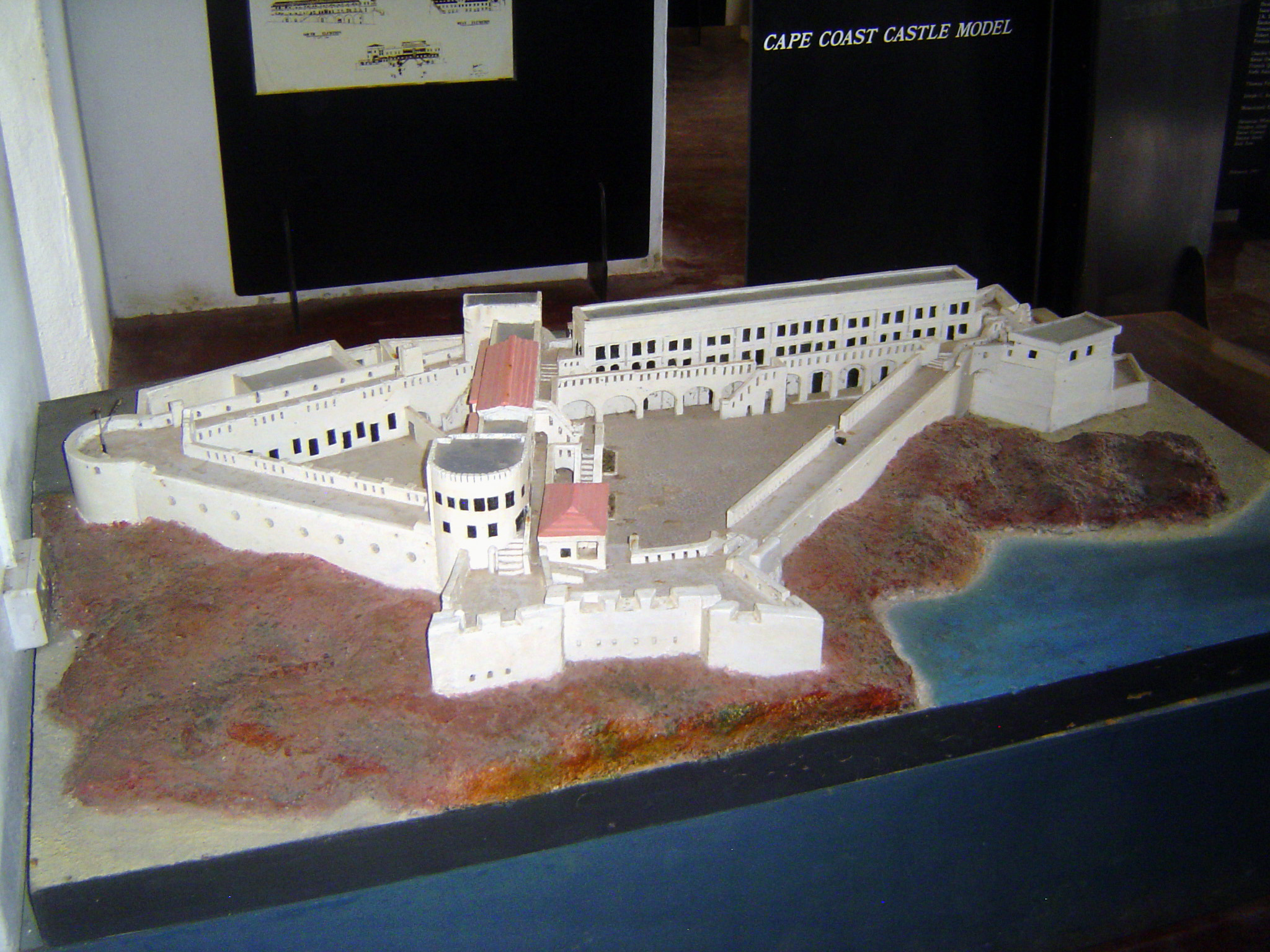
Eighty miles west of Accra and seven short of Elmina, Cape Coast was named by the Portuguese in 1471. Their Cabo Corso then sat untouched by Europeans for two centuries until a fort was built in 1653 by the Swedish-African Company. Control of the fort during the next decade shifted to the Danes, the Dutch, and then the British.
The British set about rebuilding the Swedish/Danish/Dutch fort, but the French came a century later and so damaged the fort in 1757 that it had to be rebuilt again. That took place in the 1760s and '70s. The fort's three slave dungeons remained in use for three or four decades, until the British abolished their slave trade in 1807.
Quick calculation: the fort by then had gone about its grim trade for about 150 years.
The fort was restored in the 1920s by the Gold Coast Public Works Department and again in the 1990s, this time with help from the United Nations Development Program and the United States Agency for International Development.
View from the battlement.
Landward entrance, with cannon reduced to bollards.
The castle courtyard has a stripped-bare chapel.
Hard to believe it had a chapel at all, but Christianity can be elastic. Here are some of the fort's dungeon bars.
A narrow door leads from a dungeon to a water-side exit. There might as well be a sign saying "one-way."
The fort wasn't very healthy for the Europeans who worked in it, either. Here, a courtyard inscription records the arrival and, a few months later, the mortal departure of the Dutch West India Company's director-general, dead at 41.
The view from the castle inland to the hilltop Fort William and the utilitarian Government House, leased by its private owner to house the British governor during the few years when Cape Coast was the capital of the British Gold Coast.
It doesn't improve on closer inspection.
You'll have better luck with this, the oldest Methodist church in Ghana. The first Methodist missionary arrived in 1835. He began his work here in Cape Coast.
Looking toward the altar.
The view back toward the entrance.
View from the gallery.
Details of carpentry.
Fort William, with a lighthouse tower added in 1855.
Iron plates still good to go, despite a spot of rust.
View from the top back toward the castle.
Closer.
On the outskirts of town, there's an abandoned mansion.
Here it is in better days, as shown in a photo sent by a correspondent. (Photo copyright by Betty A. Saini.)
She adds a wealth of narrative detail:
"From the late 1940s until 1957 when the British Gold Coast became independent Ghana, my mother's family rented and lived in this house outside of Cape Coast. [They, Michael Russel Stein and his wife Catherine Lassiter Stein of New York City] founded the only American... mahogany logging and export company in the Gold Coast, called "MRS."
"My grandfather Mike was a dentist who was into get rich schemes, and playing chess in Central Park he met a guy from Africa who talked him into making an investment in his mahogany exporting business in the Gold Coast. He took out a bank loan to give to this man, who promptly returned to Africa and was never heard from again. Mike and Catherine waited for a while, trying to track him down from a distance, and finally they went to Africa to find out what had happened. Once there, they found he had used the money to send his children to Edinburgh College, and there was no mahogany exporting business. Since they had a bank loan specifically for mahogany exporting and no money of their own, they had to create this business themselves, and they stayed there and made the best of their situation for 10 years.
"My mother, Betty A. Saini (formerly Betty A. Stein), was a child when her family lived in Adaaso, outside of Cape Coast. Adaaso, which means "dream" in Fante, was built of concrete block in 1937 by Benny Inchell. Mr. Inchell had passed away by the time my family lived there, and at first, they heard footsteps going up and down the stairs in the night when nobody was there. They asked around and were told it was the ghost of Benny Inchell and that they would have to have a ceremony to encourage Mr. Inchell to rest. So they hired a local chief who came and conducted the ceremony and poured a libation, and at the indicated moment, Catherine stepped into the circle and asked Mr. Inchell to please stop going up and down the stairs in the middle of the night so the family could sleep. After that, the footsteps ceased." (Photo copyright by Betty A. Saini.)
Inside.
The inscription reads Adaaso, 1937.
A son of a later owner explains that the building served for a while after his father's death as a hotel but was then abandoned because the children could not agree on its future. He himself was a retired mariner who had seen much of the world.